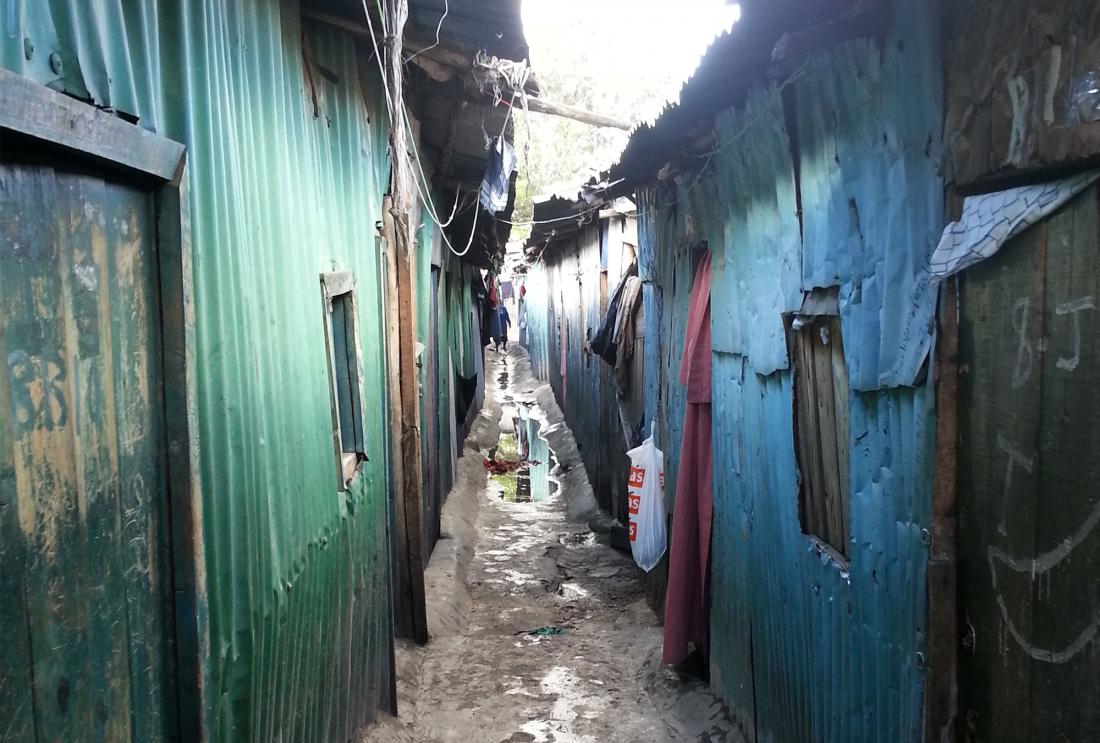Creating a Toilet Habit in Kenya
- Urban population
- Health outcomes
- Take-up of program/social service/healthy behavior
- Nudges and reminders
- Preventive health
- Water, sanitation, and hygeine
- Monetary incentives
Despite expanding access to sanitary options such as community toilets, many individuals, especially in urban slums, continue to practice open defecation. One potential explanation is that open defecation has become an ingrained habit. Applying lessons from psychology and neuroscience, researchers are evaluating whether a combination of economic incentives and a marketing campaign can foster a new habit—using hygienic latrines instead defecating in the open—among slum dwellers in Kenya.
Problema de política pública
Sanitation coverage for urban dwellers in low-income countries remains low. In Sub-Saharan Africa, for example, only 42 percent of the urban population has access to sanitation. Even when individuals have access to sanitation options, such as community toilets, usage of these facilities remains low and many households continue to practice open defecation. One potential explanation for the persistence of this practice is that it has become an ingrained habit that individuals continue to engage in despite having a better alternative.
Can interventions designed using lessons on habit formation from psychology and neuroscience encourage individuals to switch to a better habit? Private sector firms have successfully used this type of interventions to foster new habits. For example, advertising campaigns that associated triggers (a feeling of uncleanness when people run their tongue across bacteria plaque on their teeth) and rewards (a tingling sensation after brushing) with brushing regularly with mint-scented toothpaste encouraged millions to adopt it as a daily routine. However, there is little evidence on whether similar interventions would work when it comes to individuals’ hygiene choices in developing countries.
Contexto de la evaluación
The study takes place in Mukuru, a slum in the Kenyan capital of Nairobi. About 80 percent of the 500,000 people living in the slum do not have adequate access to sanitation. Sanergy is a social enterprise working to address this unmet sanitation need. Sanergy builds and franchises community toilets (called Fresh Life Toilets, or FLTs) to local entrepreneurs. These entrepreneurs charge pay-per-use fees for the toilets they operate and generate additional income by converting human waste to fertilizer at a central processing facility. Each FLT serves up to 100 users per day and provides personal hygiene products such as soap and water. While Sanergy has grown its network of toilets rapidly since its launch in 2010, low demand continues to be a challenge.

Detalles de la intervención
Applying lessons from psychology and neuroscience, researchers are partnering with Sanergy to evaluate whether a combination of economic incentives and a marketing campaign can foster a new habit—using hygienic latrines instead defecating in the open—among slum dwellers in Kenya.
Sanergy will issue discount vouchers intended to instill toilet usage as a habit and pair these with a marketing campaign that will associate a certain characteristic of the FLT (for example, water and soap) with a feeling of cleanliness. In addition to this marketing campaign, Sanergy will also advertise to a random subset of voucher recipients a financial reward that increases with the number of vouchers redeemed.
While all 3,000 individuals participating in the evaluation will receive vouchers, the specific features of the vouchers will vary across recipients. Sanergy will randomly assign individuals to one of four treatments groups or to a comparison group:
-
High Number, High Discount Group: Individuals receive 60 vouchers, each entitling the holder to a 100 percent discount i.e. free usage of any nearby FLT;
-
High Number, Low Discount Group: Individuals receive 60 vouchers, each entitling the holder to a 60 percent discount;
-
Low Number, High Discount Group: Individuals receive 30 vouchers, each entitling the holder to a 100 percent discount i.e. free usage of any nearby FLT;
-
Low Number, Low Discount Group: Individuals receive 30 vouchers, each entitling the holder to a 60 percent discount;
-
Comparison Group: Individuals receive 30 vouchers that represent a nominal discount to incentivize participants to present their vouchers upon usage.
Vouchers will be valid for usage once a day for 30 and 60 days respectively. Within each treatment group, Sanergy will offer a randomly selected subset of individuals time-delimited vouchers, which will be redeemable only during a specific two-hour window during the day. The remaining individuals will be offered vouchers that can be used anytime during the day.
Researchers will recruit households living within a two-minute walk from a FLT and collect data on how often they use their nearby FLT during the subsidy period and in the year after the subsidies end. Researchers will also track the exact times at which individuals use the toilet.
Resultados y lecciones de la política pública
Study ongoing, results forthcoming.
Caro-Burnett, Johann, Chevalier, Judith A., and Mobarak, Ahmed Mushfiq, "Is Habit a Powerful Policy
Instrument to Induce Prosocial Behavioral Change?" (2021). Cowles Foundation Discussion Papers. 2600.